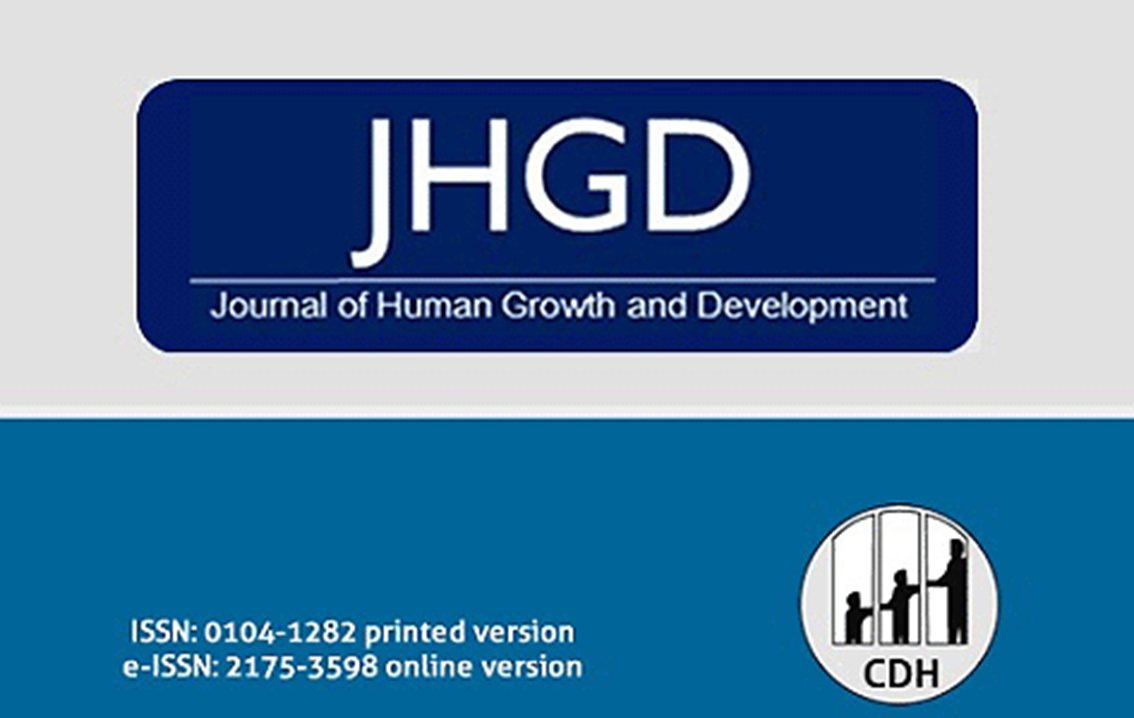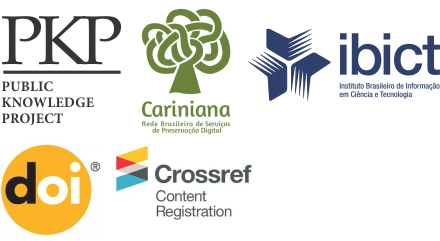A case report on rapid clinical recovery and satisfactory outcome of a toddler with probable Guillain-Barré Syndrome
DOI:
https://doi.org/10.7322/jhgd.v30.11116Keywords:
Guillain-Barre Syndrome, child health, Child DevelopmentAbstract
Introduction: Guillain-Barré Syndrome (GBS) is the most frequent cause of acute and sub-acute flaccid paralysis after polio eradication. Although rare, it is recognized as the leading cause of flaccid paralysis among the admissions to pediatric intensive care for acute neuromuscular diseases.
Objective: To report the case of a 14-month-old male patient with a probable diagnosis of GBS with acute, myelinated motor sensitive neuropathy, with probable secondary axonal involvement, with rapid clinical recovery.
Case Report: A male patient admitted in a reference hospital in the Federal District, Brazil, residing in the Integrated Development Region of the Federal District and Surroundings. The child was 14 months old and 8.6 kg, with an updated vaccination status and neuropsychomotor development appropriate for his age, with a condition of paresis in the lower limbs, without cognitive changes. After 14 hours of admission, due to the worsening of his clinical situation and the albumino-cytological dissociation identified by the analysis of cerebrospinal fluid, it was started immunotherapy with intravenous human immunoglobulin, 0.7g/kg/day for three days. Twenty four hours after start of treatment, the child showed a clinical improvement of his general condition. The patient was discharged after five days of hospitalization. After 76 days of discharge, there was a significant improvement in neuropsychomotor development, despite a slight delay in its development.
Conclusion: Due to the rarity of Guillain-Barré Syndrome among young children, it is important that health professionals remain sensitive to capture and treat unusual cases in a timely manner. We also recommend that the identified cases be monitored carefully, in order to check if the Guillain-Barré Syndrome, and its variants, can explain developmental disorders a posteriori.
Downloads
References
Pithadia AB, Kakadia N. Guillain-Barré syndrome (GBS). Pharmacol Rep. 2010;62(2):220-32. DOI: http://doi.org/10.1016/s1734-1140(10)70261-9
Rocha MSG, Brucki SMD, Carvalho AAS, Lima UWP. Epidemiologic features of Guillain-Barré syndrome in São Paulo, Brazil. Arq Neuropsiquiatr. 2004;62(1):33-7. DOI: https://doi.org/10.1590/S0004-282X2004000100006
Wachira VK, Peixoto HM, Oliveira MRF. Systematic review of factors associated with the development of Guillain-Barré syndrome 2007-2017: what has changed? Trop Med Int Health. 2019;24(2):132-42. DOI: https://doi.org/10.1111/tmi.13181
Harrar DB, Darras BT, Ghosh PS. Acute Neuromuscular Disorders in the Pediatric Intensive Care Unit. J Child Neurol. 2020;35(1):17-24. DOI: https://doi.org/10.1177/0883073819871437
Moura-Ribeiro MVL, Ferreira LS, Schmutzler KMRS. Condutas em neurologia infantil: UNICAMP. 3 ed. Rio de Janeiro: Thieme Revinter, 2017; p. 670.
Sejvar JJ, Baughman AL, Wise M, Morgan OW. Population Incidence of Guillain-Barré Syndrome: A Systematic Review and Meta-Analysis. Neuroepidemiology. 2011;36(2):123-33. DOI: https://doi.org/10.1159/000324710
Dias-Tosta E, Kückelhaus CS. Guillain Barré syndrome in a population less than 15 years old in Brazil. Arq Neuropsiquiatr. 2002;60(2B):367-73. DOI: https://doi.org/10.1590/S0004-282X2002000300005
Landaverde JM, Danovaro-Holliday MC, Trumbo SP, Pacis-Tirso CL, Ruiz-Matus C. Guillain Barré Syndrome in Children Aged <15 Years in Latin America and the Caribbean: Baseline Rates in the Context of the Influenza A (H1N1) Pandemic. J Infect Dis. 2010;201(5):746-50. DOI: https://doi.org/10.1086/650530
Rodríguez-Morales AJ, Failoc-Rojas VE, Díaz-Vélez C. Gastrointestinal, respiratory and/or arboviral infections? What is the cause of the Guillain-Barré syndrome epidemics in Perú? Current status – 2019. Travel Med Infect Dis. 2019;30:114-6. DOI: https://doi.org/10.1016/j.tmaid.2019.06.015
Capasso A, Ompad DC, Vieira DL, Wilder-Smith A, Tozan Y. Incidence of Guillain-Barré Syndrome (GBS) in Latin America and the Caribbean before and during the 2015–2016 Zika virus epidemic: A systematic review and meta-analysis. PLoS Negl Trop Dis. 2019;13(8):e0007622. DOI: https://doi.org/10.1371/journal.pntd.0007622
Brasil. Ministério da Saúde. Secretaria de Atenção à Saúde. Departamento de Ações Programáticas Estratégicas. Caderneta de Saúde da Criança Menino: passaporte da cidadania. Brasília: Ministério da Saúde, 2009.
Fokke C, van den Berg B, Drenthen J, Walgaard C, van Doorn PA, Jacobs BC. Diagnosis of Guillain-Barre syndrome and validation of Brighton criteria. Brain. 2014;137(1):33-43. DOI: https://doi.org/10.1093/brain/awt285
van den Berg B, Walgaard C, Drenthen J, Fokke C, Jacobs BC, van Doorn PA. Guillain-Barré syndrome: Pathogenesis, diagnosis, treatment and prognosis. Vol. 10, Nat Rev Neurol. 2014;10(8):469-82. DOI: https://doi.org/10.1038/nrneurol.2014.121
Salehiomran MR, Nikkhah A, Mahdavi M. Prognosis of Guillain-Barré Syndrome in children. Iran J child Neurol. 2016;10(2):38-41.
Nascimento AL, Tedesco NM, Soares-Marangoni DDA. Evidence of training influence on infant manual behavior: a systematic review. J Hum Growth Dev. 2019;29(2):216-31. DOI: http://dx.doi.org/10.7322/jhgd.v29.9425
Korinthenberg R, Schessl J, Kirschner J. Clinical presentation and course of childhood Guillain-Barré syndrome: A prospective multicentre study. Neuropediatrics. 2007;38(1):10-7. DOI: http://doi.org/10.1055/s-2007-981686
Roodbol J, Wit MCY, Walgaard C, Hoog M, Catsman-Berrevoets CE, Jacobs BC. Recognizing Guillain-Barré syndrome in preschool children. Neurology. 2011;76(9):807-10. DOI: http://doi.org/10.1212/WNL.0b013e31820e7b62
Downloads
Published
Issue
Section
License
Copyright (c) 2020 Luciana Guerra Gallo

This work is licensed under a Creative Commons Attribution 4.0 International License.







